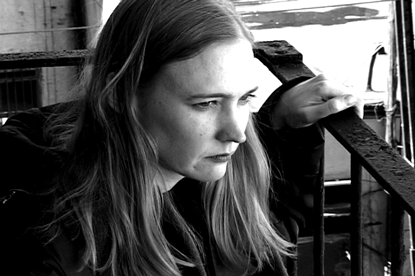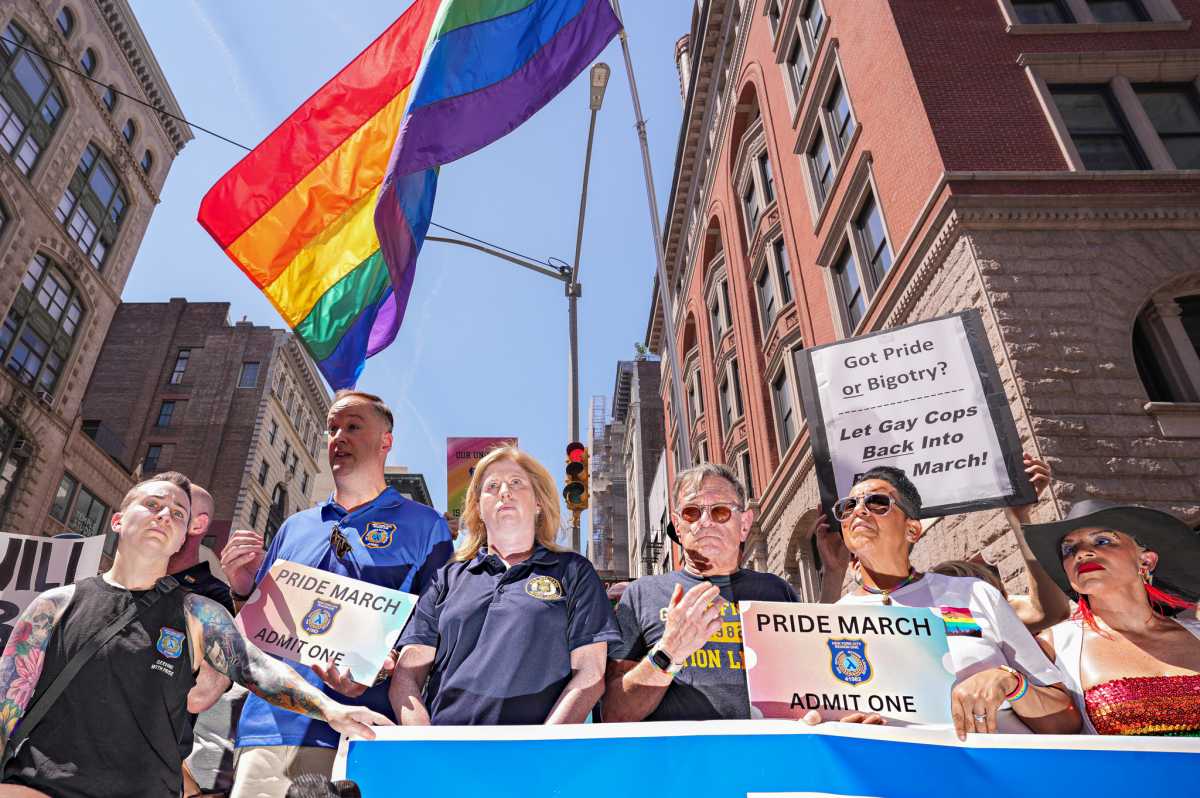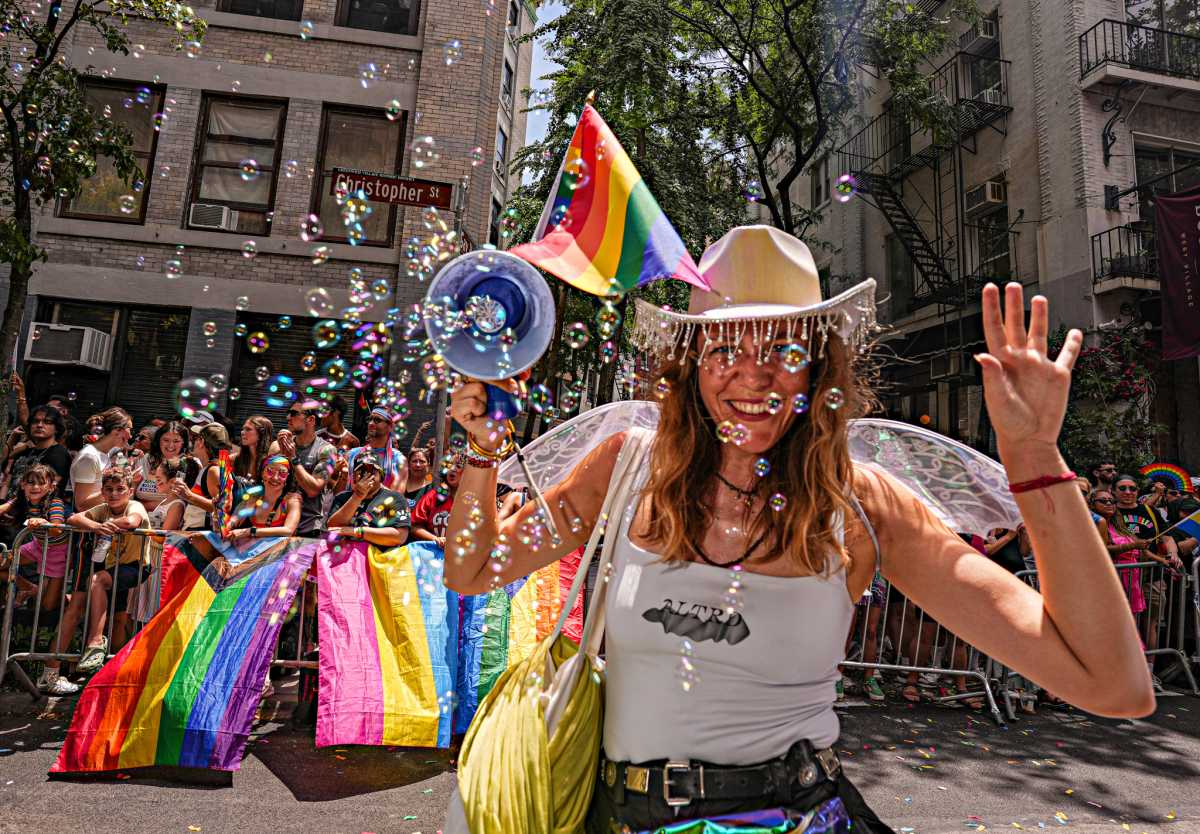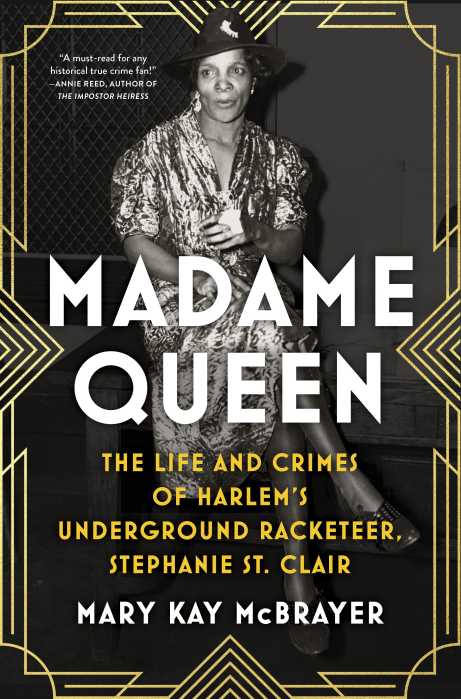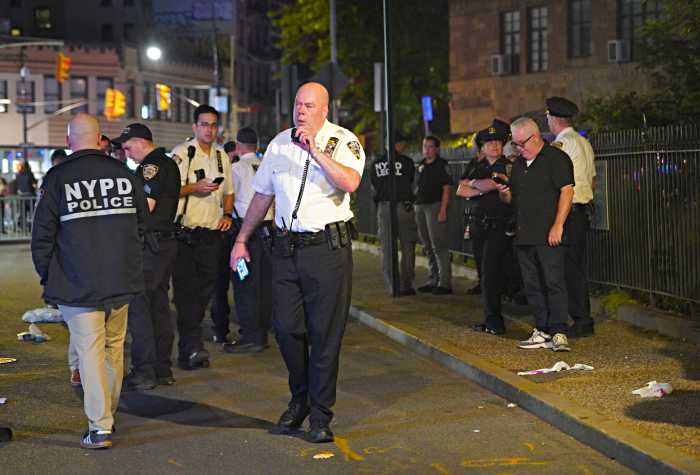Powerful debut feature condemns American isolationism, dazzles senses
The banner season for avant-garde cinema continues with “The Time We Killed” by Jennifer Todd Reeves, at Anthology Film Archives through October 27. By giving “The Time We Killed” its first theatrical run more than a year and a half after its prize-winning launch at the 2004 Berlinale, Anthology outclasses the distributors who wouldn’t step up to giving this relevant, uncompromising, bracingly beautiful film the nationwide audience it deserves.
An artist of prodigious gifts and precocious renown, Reeves has screened her many short films at top-tier venues such as the Rotterdam, Toronto, and Sundance festivals, the Museum of Modern Art, and the invitation-only Robert Flaherty Seminar. She’s also been familiar to local queer audiences since her early short “Monsters in the Closet” premiered at the 1994 MIX Festival. Accomplished as her short works are, “The Time We Killed” takes a huge stride forward; it displays a significant maturing of style and exemplifies the virtues of the feature-length experimental narrative.
A blues for American democracy under siege by the Republican extremists, “The Time We Killed” unfolds on the mindscreen of Robyn, a writer who has developed a social phobia in the wake of a lover’s death, and cloistered herself in her Brooklyn apartment during the months just prior to the 2003 U.S. invasion of Iraq. But the violent world outside keeps infiltrating her bohemian shelter, most harrowingly when she overhears a murder-suicide in a neighboring tenement; the film cuts to black and the muffled exchange between the next of kin and police is starkly subtitled.
As embodied by the poet Lisa Jarnot, Robyn at first appears passive to the point of inertia, yet Jarnot brings it off with a hilariously deadpan delivery, and her muted presence makes a solid foil for Reeves’ indelible evocation of her stream of consciousness. The film takes flight in extended sequences that fuse poetic monologues, partially composed in character by Jarnot, with Reeves’ associative montage of images—shot over five years in Michigan, Berlin, New Zealand, and elsewhere—into a mesmerizing synesthetic flow. Yet even pleasant erotic memories are brushed with unease: “I could never get enough of your strong thighs around my neck… I’d like to zip you up in a body bag next to mine.”
Wittily jousting with her own alter ego, Reeves casts herself as “Jenn,” Robyn’s “little sister” whom she met in a psychiatric hospital, where Robyn landed after jumping off a bridge at 17 in a failed suicide. The two women have remained close, but when Jenn turns up unannounced one afternoon, unlocking the door and pushing against the fastened chain, Robyn warns, “You shouldn’t open doors like that—uninvited.” Reeves is unafraid to dress herself down a notch, putting herself onscreen while Robyn intones, “It pleases you to think you’ve done better than me. But you know that I’m smarter than you. Which is why you can function in this shit society better than I can.”
Set almost entirely in Reeves’ old Carroll Gardens walk-up, the film recalls “Rear Window” as a study in restricted mise-en-scène. But unlike Hitchcock’s claustrophobia, Reeves’ inner visions actually open outward. As Robyn peers out her windows through accordion grilles and dew-clotted panes, the psychic view shifts from apparitional neighbors to continuously changing mnemonic vistas, melting from home-movie frames of a faraway childhood to oneiric portraiture of bygone lovers. These shifts are sometimes mediated by natural avatars, as when Robyn deciphers bad news in the birdsong from the fire escape, a detail suggesting a St. Francis-like, half-mad grace.
Indeed, animals are us in “The Time We Killed.” From urban fauna like rock doves and household pets to an entire exotic menagerie that appears in Robyn’s memories—sheep, llamas, ostriches, baboons, even a baby rhino—animals are emblematic of authentic being and unfettered emotion. Reeves inserts archival footage of lab experiments being conducted on dogs, spiking our visceral identification while using the hapless beasts’ fragility to mirror our domination of and cruelty toward one another.
This is but one of many ways into the film’s understated politics, subdued by comparison with last year’s spate of election-oriented films, but nevertheless oppositional. “The Time We Killed” argues pointedly against the administration’s profane exploitation of the trauma of 9/11 to justify the Republican Vulcans’ long-sought conquest of Iraq. Never hectoring in tone, the film may be insufficiently militant for some viewers. A tendentious few at last year’s Flaherty Seminar, for instance, took Reeves to task for the alleged solipsism of privileging bourgeois individual subjectivity. This trite criticism underrates the film’s measured but fervent reproof of American isolationism and obliviousness, and perhaps represents a disavowal of the potent feelings of shame and despair that it provokes.
“The Time We Killed” is an impressive formal achievement, organically integrating digital video footage of Robyn’s sanctuary with high-contrast 16mm footage of her thoughts and memories, and completed despite technical hurdles in the increasingly marginalized 16mm format. For many years, Reeves has taught optical printing classes at the venerable Millennium Film Workshop, and “The Time We Killed” also shows Reeves’ mastery of the apparatus to render an array of graphic textures.
The film’s other major asset is its soundtrack. The filmmaker’s father Jim Reeves was a musician, and her own musical affinities are manifest not only in the densely mixed soundscapes of all her works, but moreover in the expanded-cinema musical performances that Reeves has explored of late—most recently with “Shadows Choose Their Horrors,” commissioned for the Bard Music Festival this past August. True to form, “The Time We Killed” has a superb original score by Marc Ribot, Elliot Sharp, and longtime Reeves co-conspirator Zeena Parkins.
Over the opening weekend of “The Time We Killed,” Anthology will also present two programs of Reeves’ short films. On October 22 the shorts program includes “Darling International,” one of Reeves’ collaborations with the soignée M.M. Serra, and the New York premiere of “He Walked Away,” with live music by Anthony Burr and Erik Hoversten. First performed at the Toronto International Film Festival in 2003 with Hoversten and Dave Cerf, “He Walked Away” finds Reeves improvising layered color and black-and-white superimpositions on dual 16mm projectors in an unrepeatable jam.
On October 23, the compilation program includes the larksome baby-dyke video “Skinny Teeth,” the gorgeously hand-painted “Fear of Blushing,” Reeves’ rarely screened first two films, “Elations in Negative” and “Girls Daydream About Hollywood,” and her now-classic autobiographical opus “Chronic.” Surveying this oeuvre, it seems clear that the buzz about Reeves’ emerging or rising talent is idle. She has fully arrived.
gaycitynews.com

